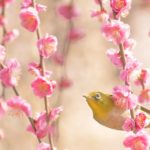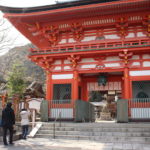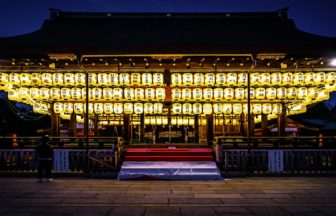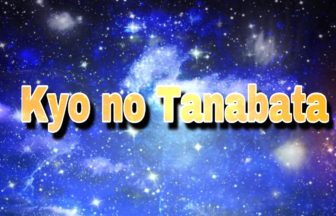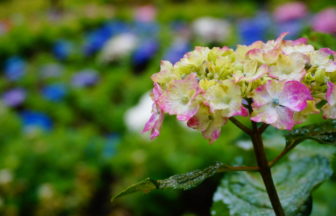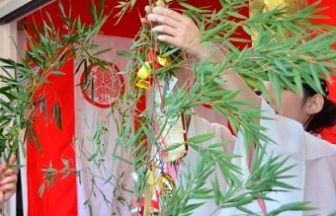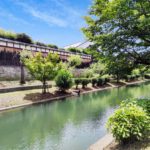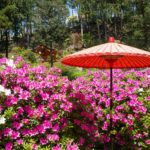A lot of shrines and temples in Kyoto have the Doll Festival on March 3rd.
So today, we thought I would tell you what the Hina matsuri is and where this tradition originates from. Also we recommend you where to visit.
We hope you enjoy the Japanese Traditonal festival more especially in Kyoto.
What is Girl’s Day?
If you were to directly translate it, it would be “Onnanoko no hi” but that word is actually used little girls as code word for period.
So we suggest you use “Hina Matsuri”.
Hina Matsuri is a seasonal festival that takes place in March with traditions to pray for the happiness and health of the girls hence “Girl’s Day.”
It’s also known as doll’s day or the doll festival because households with daughters will display Hina dolls in ancient court costumes called Hina Ningyo on some steps like platform called a Hina-dan.
They are said to protect the girls making sure their healthy, their prosperous lives and that they have good marriage luck.
Hina dolls are extremely extravagant, really detail-oriented and super expensive.
The ritual of Hina matsuri comes from Chinese calendar.
In old time, the Chinese people would wade in the river to wash away the bad luck.
This tradition was brought into Japan during the Nara period and eventually evolved into not waiting in the river.
But transferring bad luck to dolls made out of paper or hey called Hina ningyo.
Hina means baby birds so it basically means tiny or little.
They would transfer all the bad luck to the dolls and then throw them down the river in what was called Hina nagashi.
Originally this Hina nagashi event was only conducted by royalty but it began spreading to the general public.
The girls of the villages started playing with Hina dolls.
The act of playing with these dolls was called “Hina asobi”. Asobi means “to play”.
And once that happened, the dolls started to get more and more advanced.
They started to look better and better, you know doll making techniques were advancing.
Once they started to advance, people thought it was a waste to throw them down the river so they started displaying them.
That leads to the Hina doll display that we have today.
The girls that display the Hina dolls they have to clean the dolls and put them away right after March 3rd or else they’re said to have bad marriage luck.
The place you can enjoy to see the Hina nagashi in old style.
【Shimogamo jinja shrine】
Address:
〒606-0807 59, ShimogamoIzumigawa cho, Sakyo ku, Kyoto City
Access:
12 minute walk from “Demachiyanagi station” on Keihan line.
In front of “Shimogamo Jinja mae” bus stop on City Bus
Hours: 10:00~ (First hundreds visitors can get Nagashi-bina for free.)
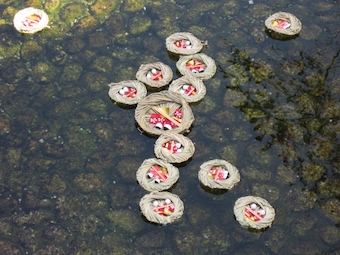
【Matsuotaisha shrine】
Address:
〒616-0024 3, Arashiyamamiya cho, Saikyo ku, Kyoto City
Access:
5 minute walk from “Matsuotaisha” on Hankyu line.
In front of “Matsuotaisha mae” bus stop on City Bus
Hours: 9:30~
The place you can enjoy to see the Hina decorations in ordinary style.
【 Sanjusangen do hall】
Address:
〒605-0941 657,Sanjyusangen do mawari, Hiashiyama ku, Kyoto city
Access:
7 minute walk from “Keihan Shichijo” on Keihan line.
In front of “Hakubutsukan Sanjusangendo mae” bus stop on City Bus
Hours: 9:00~15:30
【Houju-ji temple】
Address:
〒605-0941 655,Sanjyusangen do mawari, Hiashiyama ku, Kyoto city
Access:
10 minute walk from “Keihan Shichijo” on Keihan line.
5 minute walk from “Hakubutsukan Sanjyusangendo mae” bus stop on City Bus
Hours: 9:00~16:00

Do you need more information?
You should receive such local information of Kyoto by an application “KoI APP”.
With this application, even if you don’t have Wi-Fi, you can find nearby stores and so on.
You can install the application from the following URL.
Android app「KoI Service」
iPhone app「KoI Service」


